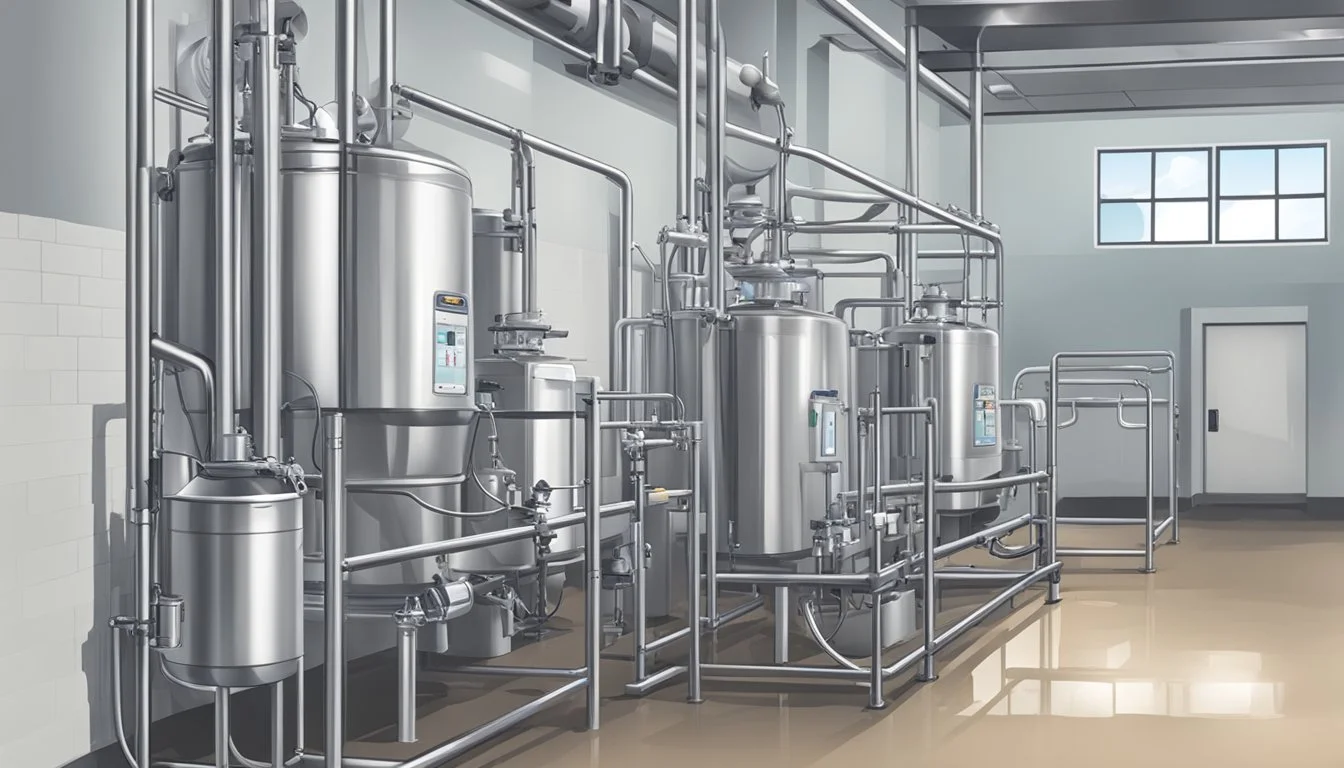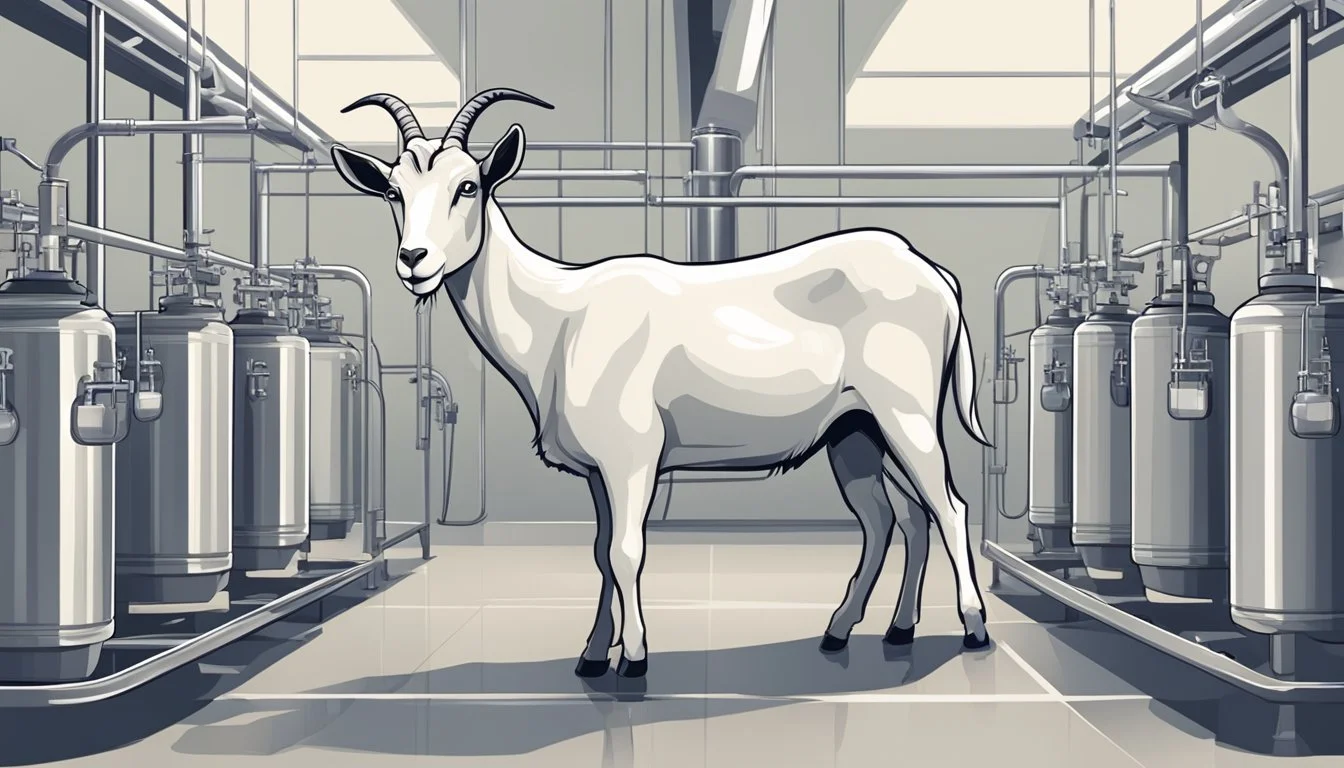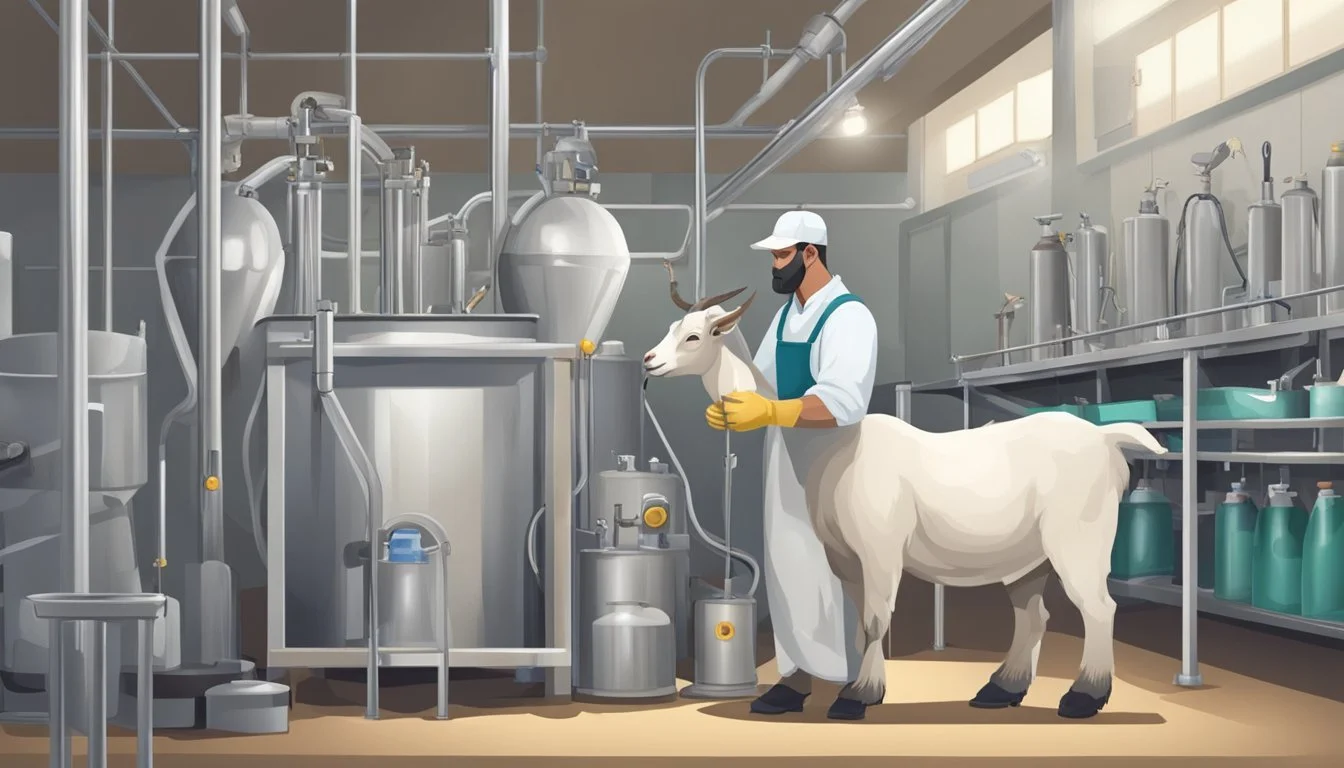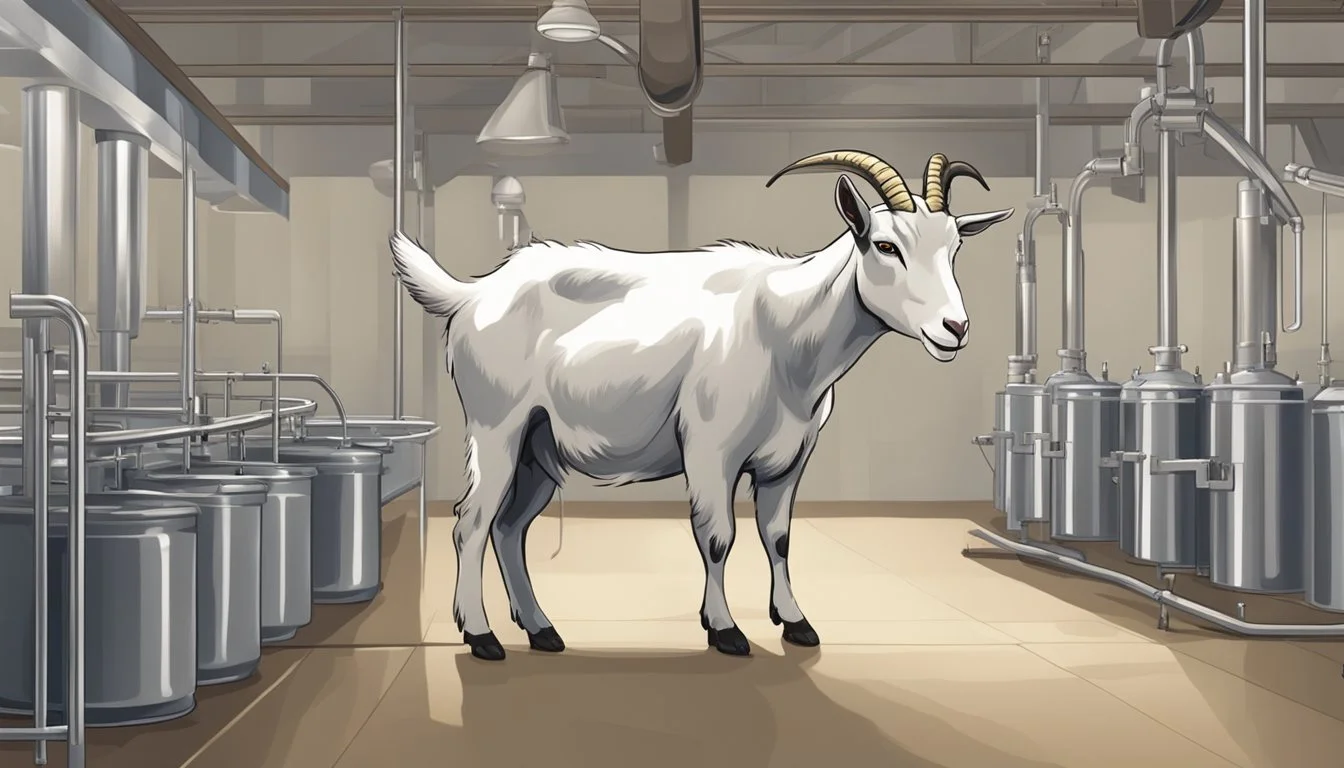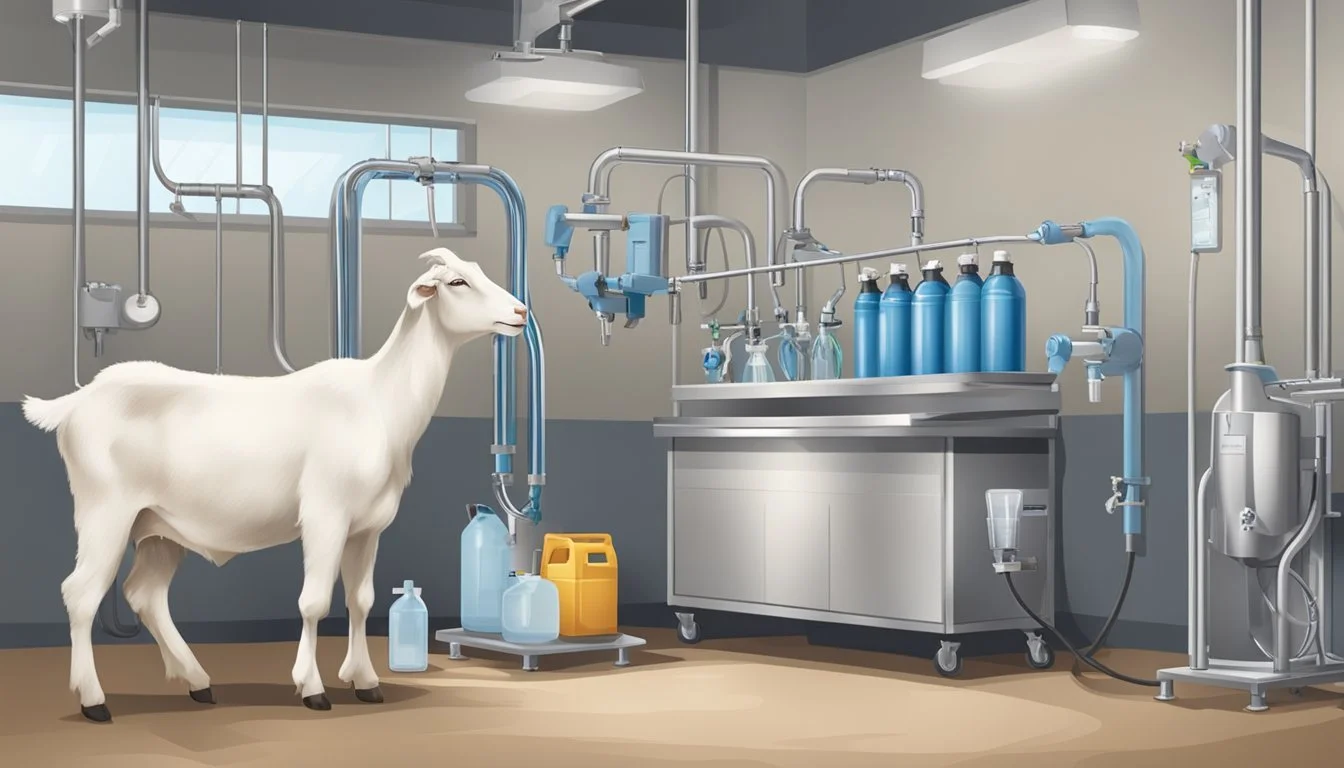The Importance of Cleanliness in Goat Milking
Ensuring Quality and Safety through Best Hygiene Practices
Maintaining cleanliness during goat milking is critical for securing the quality of milk, ensuring consumer safety, and enhancing the overall productivity of dairy farming operations. Good milking hygiene practices are paramount in preventing the proliferation of harmful bacteria that can compromise milk safety. Factors such as clean milking equipment, proper milking procedures, and the health of the dairy goats play a pivotal role in the milk production process. Research emphasizes that implementing stringent hygiene measures can mitigate bacterial contamination, which is essential for preserving the milk's nutritional value and extending its shelf life.
Hygienic milking practices are not only beneficial for consumer health but also impact the viability of dairy enterprises. Clean milk production commands a better market price and reduces the risk of financial losses associated with milk spoilage and disease transmission. Effective hygiene protocols include regular cleaning and sterilization of equipment, maintaining a clean and stress-free environment for the goats, and ensuring the workers are well-trained in milking procedures. The milk's integrity, starting from the udder until it reaches refrigeration, is maintained through a consistent hygiene routine.
Dairy farmers face the challenge of balancing efficiency with the meticulous demands of cleanliness in milking operations. Streamlined procedures that integrate hygienic milking principles without sacrificing efficiency are essential for sustainable and successful dairy farming. Whether by hand or machine, the adoption of optimal cleanliness practices in goat milking is recognized for its capacity to yield high-quality milk and fortify the foundation of dairy farm management.
Understanding the Basics of Goat Milking Hygiene
Before diving into the specifics, it's crucial to understand that cleanliness directly correlates with the health of dairy goats and the quality of milk they produce. Adhering to rigorous hygiene standards is paramount for successful dairy goat farming.
The Impact of Cleanliness on Goat Health
A clean milking environment is essential for maintaining the health of goats. Exposure to pathogens can lead to infections such as mastitis, which not only affects the goats' well-being but also compromises milk quality. Dairy farmers must prioritize cleaning and sanitizing the milking parlor and equipment to minimize infection risks. Studies highlight that a setting which emphasizes animal hygiene can have profound effects on the overall health of the herd.
Principles of Milking Hygiene
Key aspects of milking hygiene include but are not limited to:
Pre-Milking Procedures
Ensuring hands are properly washed and dried before handling the animals.
Using individualized clean cloths or disposable wipes for each goat.
During Milking
Implementing proper milking techniques to ensure complete emptying of the udder without causing injury.
Swiftly addressing any spills or contamination that occurs during the process.
Post-Milking Practices
Thoroughly cleaning and drying teats post-milking to prevent bacterial invasion.
Sanitizing milking equipment and surfaces immediately after use.
Each principle is a cornerstone for disrupting the transmission pathways of microorganisms, safeguarding both the goats and the milk they produce.
Roles of Dairy Farmers in Maintaining Hygiene
Dairy farmers are the stewards of milking hygiene. It's their responsibility to develop a routine that encompasses all facets of cleanliness, including:
Regular inspection and maintenance of milking equipment.
Providing proper training for anyone involved in the milking process.
Creating protocols for the immediate and appropriate response to hygiene issues.
A proactive approach to cleanliness and hygiene by dairy farmers ensures a stable and healthy production environment for dairy goats.
Pre-Milking Procedures and Equipment
Before milking goats, it is crucial to establish a clean environment and sterilize equipment to ensure milk quality and prevent contamination. Attention to detail in the preparation of the milking area, equipment sanitization, and udder preparation is key.
Preparation of the Milking Area
The milking area should be a designated space that is regularly cleaned and disinfected. Surfaces should be free of debris and moisture to minimize bacterial growth and the potential for contamination. The milking area must provide adequate lighting and ventilation to maintain a comfortable environment for both the animals and the milker. This space should be organized to allow smooth workflow and easy access to milking equipment and supplies.
Cleaning and Sanitizing Milking Equipment
All milking equipment, including the milking machine, must be thoroughly cleaned after each use and sanitized before the next. Use a cleaning solution recommended for dairy equipment, ensuring it is compatible with the material of your tools. The process typically follows these steps:
Rinse with warm water to remove residual milk.
Wash with a detergent solution to cleanse equipment and remove fat and protein deposits.
Rinse with warm water again to remove detergent residues.
Sanitize with an appropriate solution, like iodophor, to reduce microbial load.
Dry the equipment completely before storing or using.
Udder Preparation Techniques
Udder preparation is essential for maintaining milk quality and goat health. Dirt and bacteria must be removed to prevent mastitis and contamination. Here are the steps:
Begin with fore stripping to check for abnormalities in the milk and stimulate milk let-down.
Cleanse the udder and teats with a teat disinfectant, usually an iodophor solution, to kill pathogens.
Dry the udder thoroughly with a clean cloth or single-use towel to remove moisture and any remaining disinfectant.
The milking machine can then be attached, ensuring the teats are centered to avoid irritation.
By adhering to these pre-milking procedures and properly handling milking equipment, one contributes to the overall hygiene and success of goat milking operations.
The Milking Process
The milking process is foundational in dairy goat farming, impacting both milk yield and quality. Utilizing best hygiene practices can greatly reduce contamination risks and optimize the milk's quality.
Hand Milking Versus Machine Milking
Hand milking is a traditional method requiring skill to ensure completeness and hygiene. It allows for tactile feedback and can be gentler on the goats, but it is labor-intensive and time-consuming. Conversely, machine milking utilises milking machines which can handle numerous animals swiftly, increasing milk production. However, machines must be meticulously maintained to prevent mechanical harm to the goats and ensure the milk quality remains high.
Reducing Contamination During Milking
Minimizing contamination during milking is crucial for food safety and the health of the goats. The best practices include:
Pre-milking udder hygiene: Wiping udder and teats with a disinfectant before milking.
Proper equipment sanitation: Ensuring milking equipment, whether hand-held or machine, is sterilized before use.
Immediate cooling of milk: Rapidly reducing milk temperature post-milking to hinder bacterial growth.
Implementing a consistent routine is key to reducing the risk of contaminants entering the milk supply.
Optimizing Milk Yield and Quality
The primary goal in the milking process is to obtain the highest yield of the best quality milk. Factors influencing this include:
Consistent milking times: Establishing a routine aids in maintaining a steady milk yield.
Effective milking techniques: Including complete milk out to avoid mastitis and ensuring a calm environment to maximize milk production.
Diet and hydration: A well-balanced diet and ample water intake are essential for high milk quality.
By focusing on these factors, dairy farmers can ensure optimal milk yield and quality from their herds.
Post-Milking Practices
Post-milking procedures are critical for maintaining milk quality and animal health. Thorough cleaning, proper milk handling, and stringent hygiene standards can help prevent contamination and disease.
Cleaning Protocols for Equipment
After milking, all equipment must be cleaned meticulously to remove milk residues and prevent bacterial growth. Steps include:
Rinsing: Remove all milk traces with cool water.
Washing: Use hot water combined with an appropriate dairy equipment cleaner for thorough sanitation.
Sanitizing: Apply an effective sanitizer to all surfaces that came into contact with milk.
Drying: Allow equipment to air-dry to remove any remaining bacteria which thrives in moisture.
Teat Dipping and Post-Milking Hygiene
Teat dipping is a pivotal part of post-milking hygiene, serving two main functions: preventing mastitis and killing lingering pathogens.
Immediately after milking, immerse teats in a teat dip solution that requires a proper balance of sanitizing agents to be effective.
Use a barrier dip if the goats are exposed to harsh weather conditions, which provides a long-lasting protective coat.
Milk Handling and Storage
Responsible milk handling and storage are paramount to preserve milk's quality and safety.
Cooling: Chill milk immediately to 4°C (39.2°F) or below to inhibit bacterial growth.
Storage Containers: Utilize clean, sanitized containers that are designed for milk storage.
Transport: If milk is to be transported, ensure it remains at a consistent, cool temperature throughout the journey to its destination.
Milk Quality Control and Disease Prevention
Ensuring the health of the dairy herd and the safety of milk begins with stringent quality control measures and proactive disease prevention. A focus on monitoring for pathogens, strategies to combat mastitis and zoonosis, and the maintenance of consistent milking routines are essential to maintain high standards of milk quality.
Monitoring Milk for Pathogens
Regular testing of goat milk is crucial for detecting the presence of pathogenic bacteria such as Salmonella and Staphylococcus aureus. Farms should implement routine sampling and analysis of milk to ensure that it is free from these and other infectious agents. This helps to not only keep the milk safe for consumers but also serves as an early warning system for potential health issues within the herd.
Strategies to Combat Mastitis and Zoonosis
Mastitis, an inflammation of the mammary glands, is a common condition in lactating goats that can affect milk quality and the animal's health. Implementing practices such as pre-milking teat disinfection, proper milking machine maintenance, and culling of chronically infected animals can aid in mastitis control. Additionally, preventing zoonotic diseases—those transmissible from animals to humans—requires strict biosecurity measures and worker education to limit the risks.
Importance of Regular Milking Routine Checks
Adherence to a regular milking routine is vital for both animal welfare and milk quality. Routine checks should include inspection of milking equipment cleanliness, proper milking technique, and frequency of milking. Consistent milking intervals help prevent udder engorgement, reduce stress on the animal, and can lead to a decrease in the somatic cell count (SCC), which is a key indicator of milk quality.
Maintaining cleanliness, preventing disease, and adhering to a strict milking regimen are the pillars of producing high-quality goat milk. These practices are foundational to ensuring that the milk remains free from contaminants and safe for consumption.
Advancements in Milking Technology
Advancements in milking technology have improved hygiene and efficiency on dairy farms. These innovations are vital for ensuring the quality and safety of goat milk.
The Role of Automated Milking Systems
Automated milking systems (AMS) have revolutionized dairy farming, allowing for more consistent and hygienic milking processes. These systems reduce human error and ensure that each goat is milked according to its specific needs. The implementation of AMS has led to increased milk quality due to the precise control of milking times and frequency, which is essential for maintaining the health of dairy goats.
Innovations in Milking Equipment Sanitation
Sanitation technologies for milking equipment have seen significant enhancements. Cleaning solutions for milk handling equipment combine chemical, thermal, and physical processes, eliminating contamination risks. Properly designed milking parlors now integrate systems that automatically sanitize the milking equipment before and after each use to minimize bacterial contamination.
Impact of Technology on Milking Efficiency
Technological advances in milking machines and equipment have led to remarkable improvements in milking efficiency. High-capacity milking machines enable farmers to milk more goats in less time, without compromising milk quality. For example, large herds can now be milked with minimal labor, speeding up operations to handle 200 goats per hour or more while maintaining stringent hygiene standards. This means that dairy goats receive more consistent care and milking, which can lead to better overall herd health and milk production.
Impact of Clean Milking Practices on Dairy Products
Clean milking practices are imperative in ensuring the high quality of dairy goods and are particularly crucial in cheese production, which greatly relies on the hygiene of goat milk.
Ensuring Quality of Dairy Goods
Implementing hygienic milking procedures directly contributes to the quality of dairy products. Dairy goats that are milked in a clean environment produce milk with lower bacterial counts, leading to a longer shelf life and superior taste of the dairy goods. Regular sanitization of equipment and the milking area, along with proper hand and udder cleaning, helps maintain the intrinsic quality of the goat milk.
Effects of Milk Hygiene on Cheese Production
The influence of milk cleanliness on cheese production cannot be overstated. Cheese, made from hygienically produced goat milk, boasts not only better flavor and texture but also reduces the risk of cheese-borne diseases. Adequate cleaning and disinfecting of processing equipment are vital, as even small lapses can affect the entire batch of cheese, proving that meticulous hygienic milk production is key to producing high-quality cheese.
Challenges and Solutions in Goat Milking Hygiene
In the realm of goat milking, hygiene stands as a pillar of paramount importance, intertwined with both animal welfare and economic viability. Two major obstacles often undermine this critical aspect: the complexities of managing hygiene in rapidly evolving peri-urban dairy farms, and the consequential economic losses stemming from neglect in milking practices.
Managing Hygiene in Peri-Urban Dairy Farming
Peri-urban dairy farming is marked by its proximity to urban markets and the challenges posed by limited land availability. To address hygiene management in these settings, farmers are encouraged to foster routines like regular cleaning and sanitization of equipment and facilities. Implementing proper milking hygiene can dramatically reduce the level of bacteria in milk—a crucial step in safeguarding public health and ensuring the quality of dairy produced.
Regular Sanitization Practices:
Clean milking equipment after each use
Sterilize udders before and after milking
Training Programs:
Educate farmworkers on disease prevention
Create awareness on the importance of cleanliness
Addressing Economic Losses from Poor Milking Hygiene
Poor milking hygiene can lead to significant economic losses due to disease prevalence, reduced milk yield, and penalization for low-quality milk products. Investing in education on herd management and milking hygiene practices is vital for farmers, especially those with delicate breeds like the Saanen, which have high milk yield but are also sensitive to diseases.
Economic Impact Mitigation:
Lower Disease Incidence: Implementing strict hygiene practices reduces the risk of mastitis, which affects yield and quality.
Quality Assurance: Regular monitoring of Total Bacterial Count (TBC) and Somatic Cells Count (SCC) to maintain milk integrity.
By tackling these challenges with informed solutions, the goat dairy sector can secure its place in the market, optimizing animal production and minimizing economic losses.
Training and Education for Dairy Farmers
Effective training and education are foundational for enhancing the cleanliness standards of goat milking. With proper educational programs, dairy farmers can substantially boost their milking management and ensure the health of both the dairy goat population and milk consumers.
Developing Effective Milking Management Programs
A core aspect of training should focus on Milking Management Programs. These programs guide dairy farmers on how to handle milking goats, ensuring a process that is both hygienic and efficient. For instance, proper teat cleaning and equipment sterilization are critical to preventing the spread of mastitis, a common infection in dairy animals. Best practices include using individual paper towels for cleaning teats and ensuring that milking equipment is disinfected after each use, particularly when a goat presents symptoms of mastitis (goats.extension.org).
Another component involves training dairy farmers to routinely inspect and maintain milking machinery. This is pivotal for small ruminants where the risk of contamination or machinery malfunction could affect a large segment of their relatively smaller populations.
Educational Outreach to Improve Dairy Farming Practices
The dissemination of educational resources plays a vital role in advancing dairy farming practices. It encompasses everything from food safety and hygiene to animal welfare. For example, farmers can benefit from tailored training approaches that incorporate the principles of the techno-managerial research approach and the theory of planned behaviour to understand how their actions impact food safety in dairy chains (sciencedirect.com).
Educational outreach empowers farmers with knowledge on nutrition, ensuring that dairy cows and goats receive a balanced diet, which is instrumental for milk quality and animal health. Integrating lessons on environmental stewardship into educational curricula also underscores the importance of sustainable dairy farming practices.
By engaging in these focused training and educational initiatives, dairy farmers can wholly embrace their role as guardians of public health, animal well-being, and environmental sustainability.
Global Perspectives on Goat Milking Hygiene
The hygiene practices in goat milking are critical for ensuring the microbiological quality of milk, influencing its safety for consumers worldwide.
Comparative Analysis of Milking Hygiene Practices
Different regions implement varying practices that affect the bacterial count in milk, which is a key indicator of its quality and safety. In European countries such as France, Spain, and Italy that have a significant stake in animal production, especially goat milk production, training and education levels concerning milking hygiene standards are scrutinized. For instance, practices involving washing and drying udders before milking and the application of post-milking teat disinfectants are more prevalent. In contrast, dairy goat farming in regions with less stringent standards may see higher contamination levels, with milk-borne pathogens being a risk.
International Standards for Dairy Hygiene
Internationally, organizations like the Codex Alimentarius commission develop guidelines that aim to harmonize milk hygiene standards globally. Hygiene criteria focus on minimizing bacterial counts and ensuring the microbiological quality of milk. These include specifications for the collection, storage, and transportation of bulk tank milk. For example, a study found that the bacterial count at the udder was 65,000 bacteria/ml, which subsequently increased in farm refrigeration tanks after machine-milking to 362,000 bacteria/ml, highlighting the need for effective hygiene practices throughout the milking process to meet international standards.
Conclusion
Maintaining high standards of cleanliness during goat milking is vital for ensuring premium milk quality and safeguarding animal health. A clean milking environment and proper milking hygiene practices prevent the introduction of contaminants into the milk. This, in turn, minimizes the risk of milk spoilage and promotes longer shelf life.
Dairy farmers should adopt consistent hygienic practices, such as:
Thoroughly cleansing the udder and teats before milking.
Using clean, disinfected equipment.
Immediately cooling milk after milking to inhibit bacterial growth.
These steps help to prevent mastitis, a prevalent issue in dairy goats, and contribute to overall animal wellbeing. Adhering to robust hygiene protocols is not just about compliance; it is about commitment to excellence in dairy farming. Farmers who emphasize milking hygiene are more likely to see a return on investment through increased consumer trust and demand for their dairy products.
For more information on post-milking care and hygiene management, there are resources with focused guidelines and practices. They explore not just the "how" but also the "why" of proper milking procedures.
Ultimately, clean milking practices are not just good ethics; they are sound economics for sustainable dairy farming.



